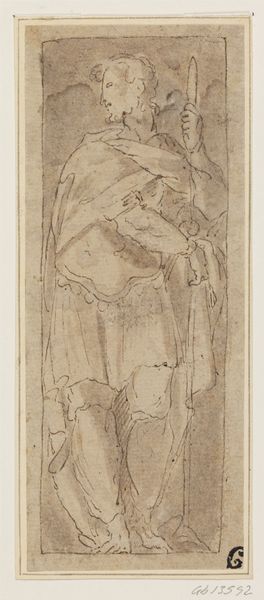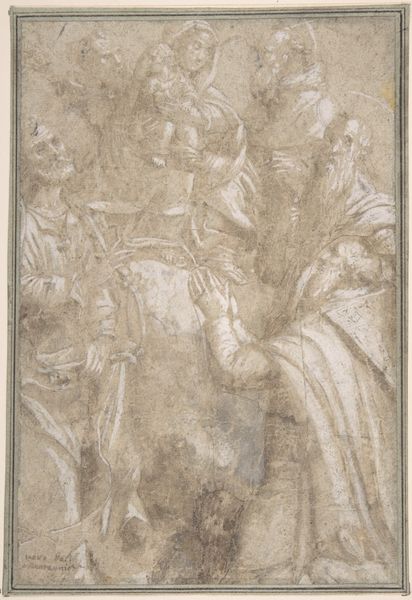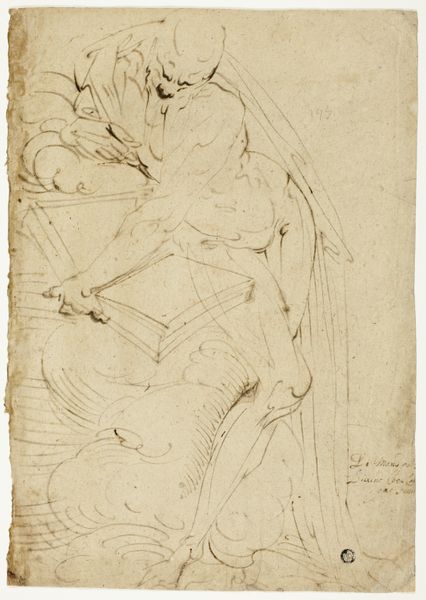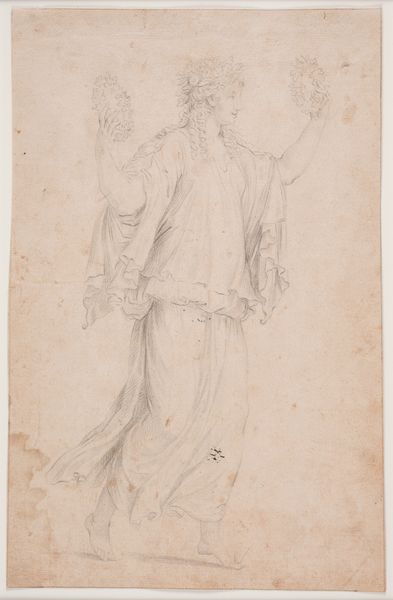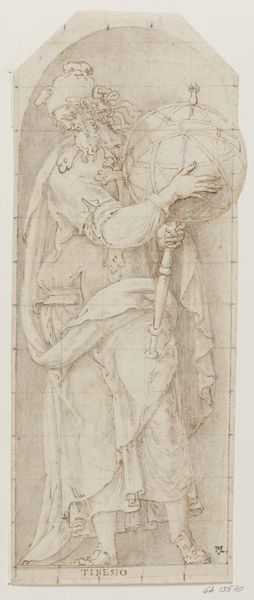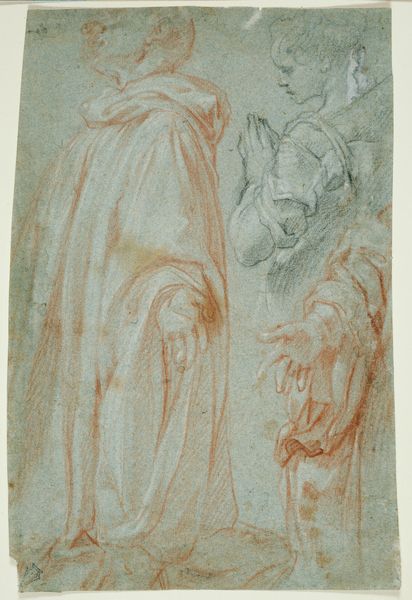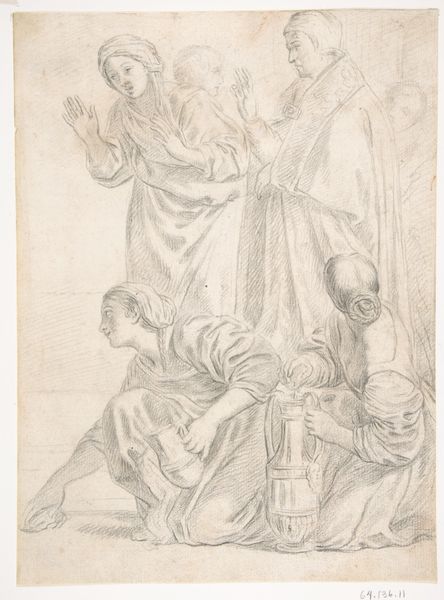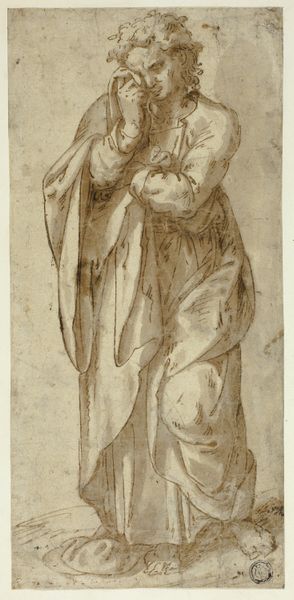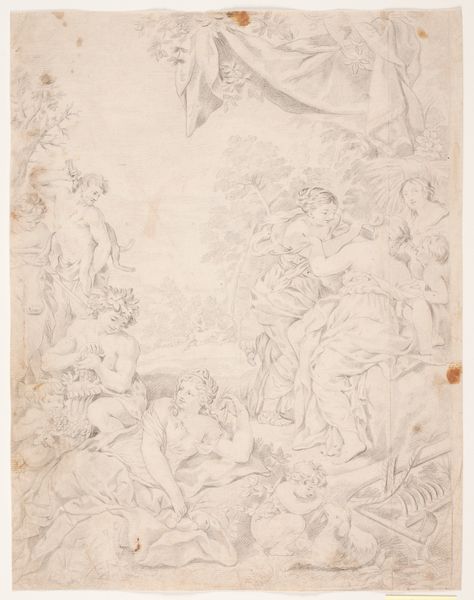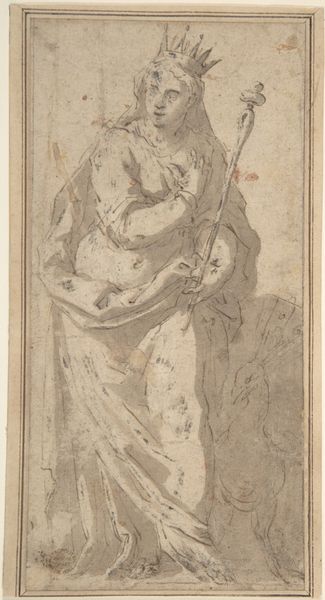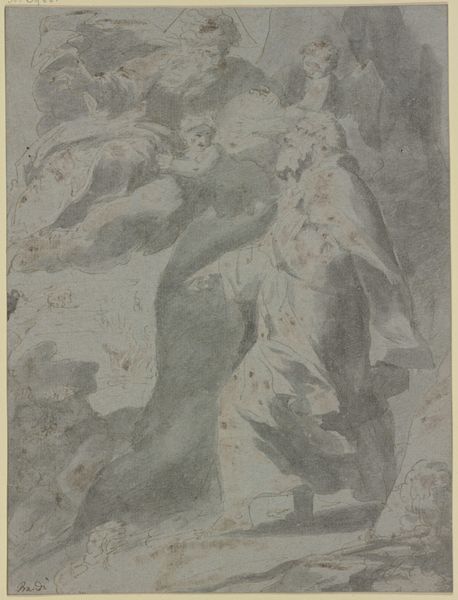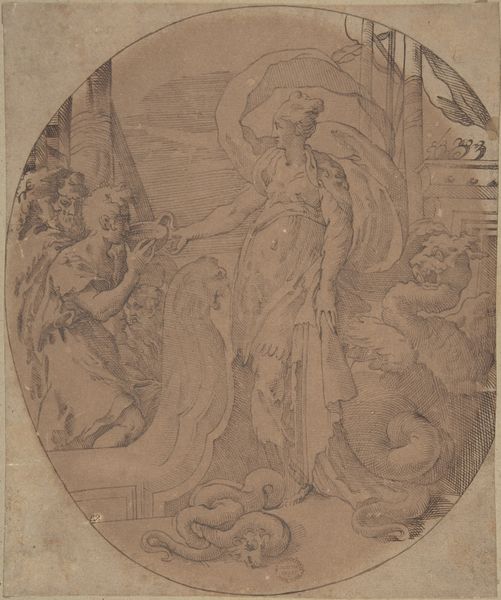
drawing, print, paper, ink, pencil, chalk, charcoal, black-chalk
#
portrait
#
drawing
#
narrative-art
# print
#
charcoal drawing
#
figuration
#
paper
#
ink
#
pencil drawing
#
pencil
#
chalk
#
charcoal
#
history-painting
#
academic-art
#
nude
#
black-chalk
Dimensions: 281 × 165 mm
Copyright: Public Domain
Curator: Let’s take a closer look at this captivating drawing from the Art Institute of Chicago’s collection titled "Woman and Nude Young Boy Surrounded by Figures". Editor: It has this unfinished, dreamlike quality, doesn’t it? The figures seem to emerge from the page, all rendered in these subtle tonal shifts. It’s melancholic, even with the youth depicted. Curator: Indeed. Note the anonymous artist's command of line and wash. See how chalk, charcoal, pencil and ink all contribute to creating this very subtle tonality. It directs the viewer's eye through the composition; the arrangement of the figures, with that kneeling, partially nude man at the bottom, creates a very pronounced foreground. Editor: He certainly commands attention, doesn’t he? And his placement sets the emotional tone. One can feel a sense of desperation or supplication radiating outwards from his posture and up through the standing woman and the onlookers behind. I'm wondering what is being communicated in this scene of obvious wealth and status? Who is he and to whom is he appealing? What sort of ritual or custom might be unfolding here? Curator: You’ve raised a very good point. It’s certainly difficult to pinpoint the intended narrative, or what historical narrative may be revealed by researching its origins. Its lack of sharp definition and use of shadow and suggestion could imply a dream-state that lends itself to the history-painting category. Perhaps it evokes feelings or memories instead of demanding narrative specifics? The nude figure may perhaps simply serve to activate this dynamic. Editor: Right, right. Considering what seems to be a rejection of narrative clarity or contextual markers might indicate that the drawing should stand alone; its focus on human form and interactions— the human condition, broadly stated. It presents a fascinating case for contemplating themes beyond its potential subject matter. Curator: An important idea. By recognizing these intrinsic features of form, light and tonality the audience can better contemplate its intended significance. Editor: Well, by investigating its socio-historical potential we can speculate what role the drawing would have served during the time in which it was composed. Perhaps that understanding can offer additional meaning to the viewer? Curator: Very well put! Both avenues are helpful for analysis and contextual understanding. Thank you for your insightful perspectives! Editor: My pleasure. I always find viewing the aesthetic, stylistic, and thematic choices in dialogue enriches my perception.
Comments
No comments
Be the first to comment and join the conversation on the ultimate creative platform.
